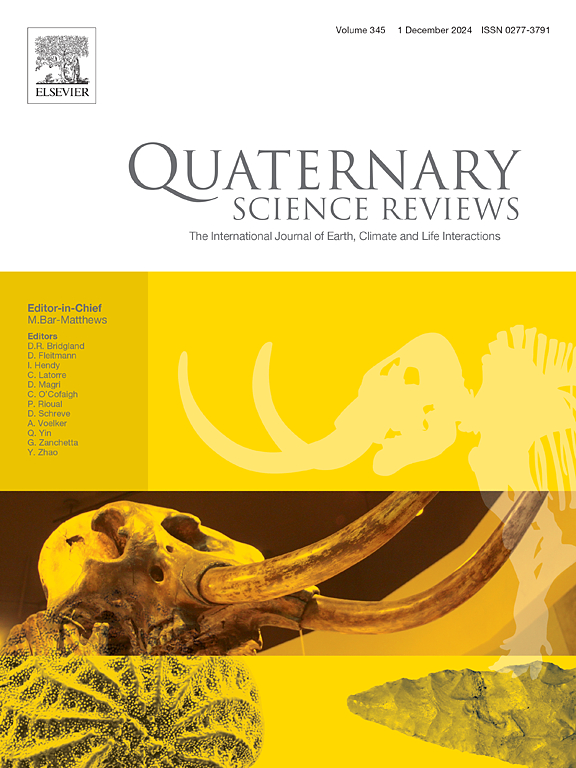Holocene vegetation history of the Mississippi River Delta: A regional synthesis
IF 3.2
1区 地球科学
Q1 GEOGRAPHY, PHYSICAL
引用次数: 0
Abstract
The modern Mississippi River Delta (MRD) contains extensive areas of wetlands with a distinct vegetational zonation determined by a north-to-south salinity gradient. This paper presents the first reconstruction of Holocene ecological history of the MRD based on a review and regional synthesis of new multi-proxy records from four wetland sites across these vegetation zones. During the past 6 ka, ecological development in the MRD was primarily driven by the geological processes of delta lobe switching, as the Mississippi River formed six delta lobes along the coast. The progradation of the St. Bernard delta lobe during 4.6-2.6 ka delivered abundant freshwater and sediments to the northern sites, rapidly changing the estuarine or marine-influenced interdistributary environment to a freshwater lake, swamp, or marsh. Freshwater wetlands were widespread in the MRD during 2.3-0.7 ka, before they were progressively transformed into the modern saline and intermediate marshes in the southern sites over the past 700 years due to relative sea level rise. The arrival of black mangroves and its proliferation during the past century marked the latest chapter in the Holocene ecological history of the MRD. The modern vegetation zones—as governed by the salinity gradient—are relatively young ecosystems, having developed at their present locations for only a few hundred years. Human activity has played an increasingly important role in affecting the ecosystem and environment during the past 3000 years.
密西西比河三角洲全新世植被史:区域综合
现代密西西比河三角洲(MRD)包含广阔的湿地区域,由北向南的盐度梯度决定了其独特的植被带。本文通过对4个湿地全新代记录的回顾和区域综合,首次重建了MRD全新世生态史。在过去的6ka中,湄公河三角洲的生态发展主要是由三角洲瓣转换的地质过程驱动的,密西西比河沿海岸形成了6个三角洲瓣。4.6-2.6 ka期间,圣伯纳德三角洲叶的沉积为北部地区带来了丰富的淡水和沉积物,使河口或受海洋影响的支流间环境迅速转变为淡水湖、沼泽或沼泽。淡水湿地在2.3 ~ 0.7 ka期间广泛分布于MRD,但在过去700年中,由于海平面的相对上升,淡水湿地在南部遗址逐渐转变为现代盐碱地和中间沼泽。在过去的一个世纪里,黑红树林的到来和繁殖标志着MRD全新世生态历史的最新篇章。受盐度梯度控制的现代植被带是相对年轻的生态系统,在它们目前的位置上发展只有几百年。近3000年来,人类活动对生态系统和环境的影响越来越大。
本文章由计算机程序翻译,如有差异,请以英文原文为准。
求助全文
约1分钟内获得全文
求助全文
来源期刊

Quaternary Science Reviews
地学-地球科学综合
CiteScore
7.50
自引率
15.00%
发文量
388
审稿时长
3 months
期刊介绍:
Quaternary Science Reviews caters for all aspects of Quaternary science, and includes, for example, geology, geomorphology, geography, archaeology, soil science, palaeobotany, palaeontology, palaeoclimatology and the full range of applicable dating methods. The dividing line between what constitutes the review paper and one which contains new original data is not easy to establish, so QSR also publishes papers with new data especially if these perform a review function. All the Quaternary sciences are changing rapidly and subject to re-evaluation as the pace of discovery quickens; thus the diverse but comprehensive role of Quaternary Science Reviews keeps readers abreast of the wider issues relating to new developments in the field.
 求助内容:
求助内容: 应助结果提醒方式:
应助结果提醒方式:


